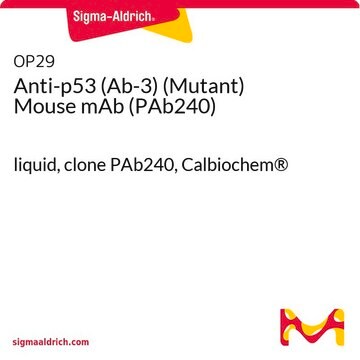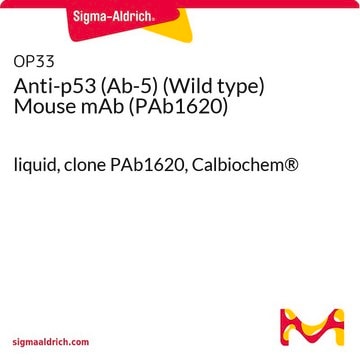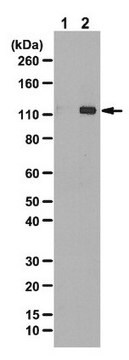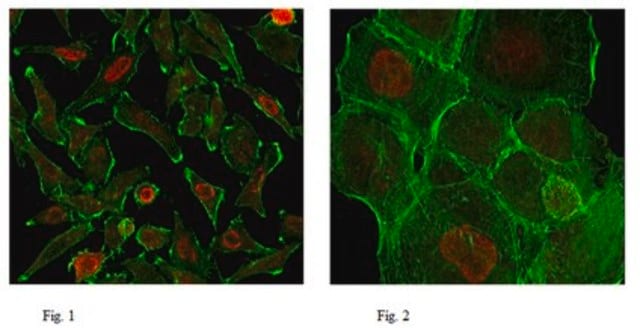CBL404
Anti-p53 Antibody, aa 211-220, clone240
clone PAb240, Chemicon®, from mouse
Synonym(s):
Anti-p53 antibody
About This Item
Recommended Products
biological source
mouse
Quality Level
antibody form
purified antibody
antibody product type
primary antibodies
clone
PAb240, monoclonal
species reactivity
hamster, monkey, mouse, chicken, human, rat, bovine
manufacturer/tradename
Chemicon®
technique(s)
immunohistochemistry: suitable
immunoprecipitation (IP): suitable
western blot: suitable
isotype
IgG1
suitability
not suitable for immunohistochemistry (Paraffin)
NCBI accession no.
UniProt accession no.
shipped in
wet ice
Gene Information
human ... TP53(7157)
General description
a) Most of them are missense point mutations giving rise to an altered protein function.
b) Many -but not all- mutant p53 proteins exhibit a common mutant structure, which can be recognized by monoclonal antibodies specific for p53 in the mutant conformation.
Specificity
Immunogen
Application
Detection of mutant p53
Prevalence of detection using CBL 404
-50% colon carcinoma sections positive (30 samples)
-70% lung carcinoma sections positive (50 samples)
-30% carcinoma breast samples positive (50 samples)
Normal and pre-malignant tissues negative
Reacts on methacarn fixed tissue
Optimal working dilutions must be determined by the end user.
Epigenetics & Nuclear Function
Transcription Factors
Linkage
Physical form
Storage and Stability
Legal Information
Disclaimer
Not finding the right product?
Try our Product Selector Tool.
recommended
Storage Class Code
12 - Non Combustible Liquids
WGK
WGK 1
Flash Point(F)
Not applicable
Flash Point(C)
Not applicable
Certificates of Analysis (COA)
Search for Certificates of Analysis (COA) by entering the products Lot/Batch Number. Lot and Batch Numbers can be found on a product’s label following the words ‘Lot’ or ‘Batch’.
Already Own This Product?
Find documentation for the products that you have recently purchased in the Document Library.
Our team of scientists has experience in all areas of research including Life Science, Material Science, Chemical Synthesis, Chromatography, Analytical and many others.
Contact Technical Service








